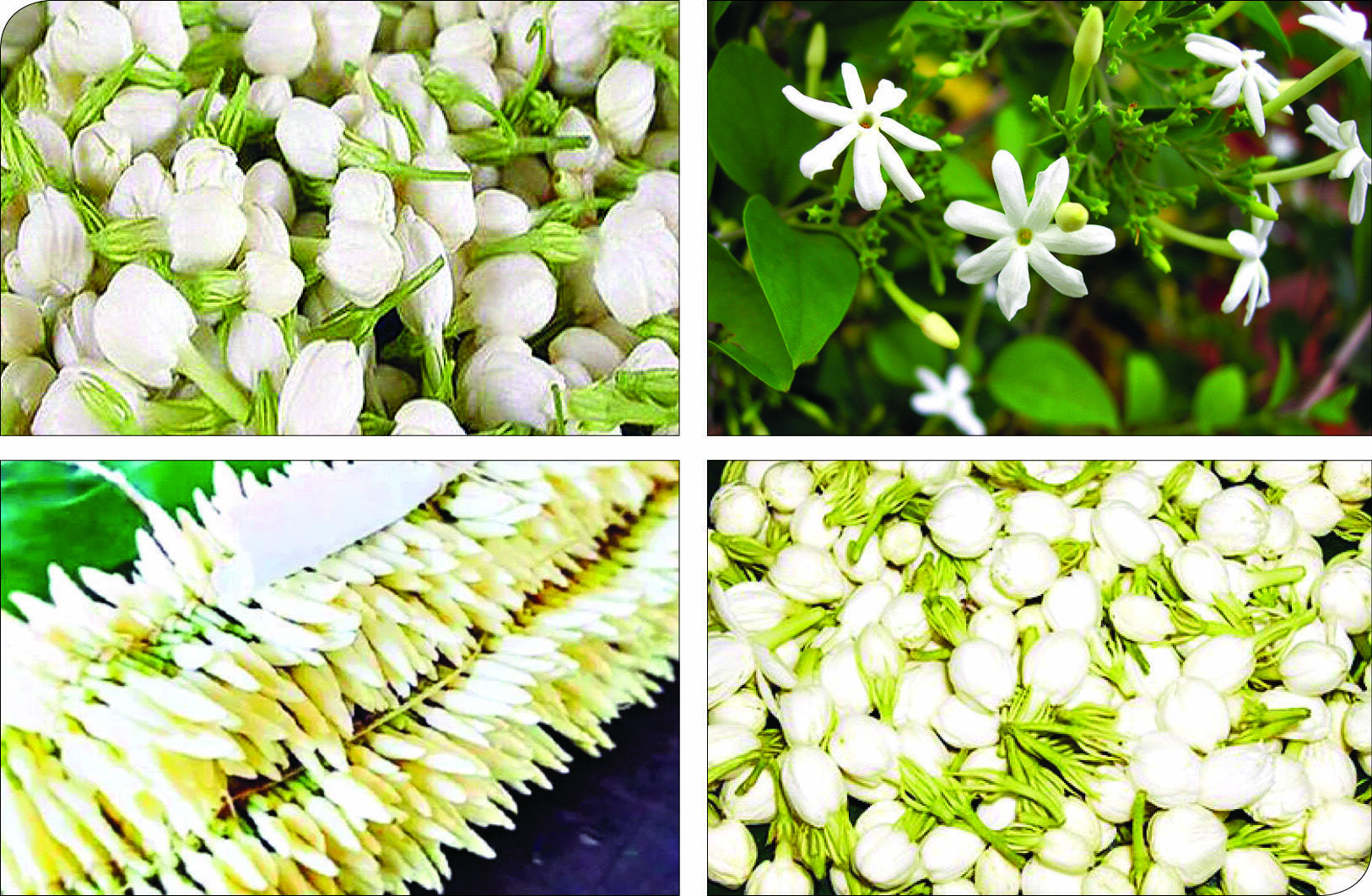Prestige of fragrance
Three varieties of Jasmine — the queen of fragrance — having geographical associations with Hadagali, Mysore and Udupi received the GI tag in 2007 while the fourth related to Madurai was tagged in 2013

It is India's most ubiquitous flower – it is found in the temples, adorns the hair of girls and women, it is woven into garlands, perfumes the bridal bed and is also used in the wreaths to martyrs. It is available at all street corners across the country. It is called by different names — Mogra, Motia, Chameli, Malli puvvu, Jaati, Mulla, Mallige, Juhi etc. — and finds a place in the Mahabharata, Ramayan, Meghdootam Shakuntalam as well as the Kama Sutra by Vatsyayana! It is described as the 'queen of fragrance' as it is exquisitely scented to soothe and refresh anyone and everyone who gets into its close proximity
Four varieties of jasmine – three from Karnataka, and one from Tamil Nadu — have also received the GI tag for their unique properties which are special to the geography in which they are grown. The horticulture department of Karnataka took the lead by registering three varieties of jasmine – the Mysore Mallige, the Hadagali Mallige and the Udupi Mallige as early as 2007. Each of these have unique traits which make them amenable for the GI.
The uniqueness of the 'Mysore Mallige' lies in its unique lingering fragrance. This particular variety is being grown only in and around Mysore and Seringapatam taluk of Mandya district. Owing to the proximity of all these areas to Mysore city and erstwhile kingdom of Mysore, the name Mysore jasmine (Mysore Mallige) is prevailing. The sandy loam soil with comparatively high pH prevailing in this region (Mysore and surrounding areas) makes a congenial ground for growing this crop, and the dry and warm weather, coupled with low humidity gives it the 'distinct Mysorean edge'.
Udupi Mallige is mainly grown in the coastal regions of Udupi district and surrounding villages of Shankarapura, Belmannu, Modumbe, Panjimar, Undoor, Ennaje and Katpadi. Owing to the proximity of all these villages to Udupi city, the name Udupi jasmine (Udupi Mallige) is prevailing. Flowers are fragrant and mainly used for garlands. Buds have good keeping quality with shelf life beyond 72 hours. The flowers are mainly marketed in coastal districts, Bombay and are exported to the Gulf. More than a thousand families depend upon this crop for their livelihood. However, it must be mentioned that Udupi jasmine growers plant this crop in their home yard instead of separate land for this crop.
Hadagali Jasmine is a variety of jasmine grown in Huvina Hadagali and surrounding areas. Hadagali is the taluk headquarter located at 150 kilometres from Bellary District. These fragrant flowers are said to have been cultivated since the days of the Vijayanagar Empire in 15th century CE. The full name of the village is Huvina-Hadagali, and the derivation of the word is said to be from 'huvina', the adjectival form of the Kannada word 'huvu', a flower; hadaga, a boat; and halli, a village, meaning overall "the village of flower boats". The story goes that in the days when the city of Vijayanagar flourished, flowers for its temples and palaces were floated down the Tungabhadra River from this place. The story receives some confirmation from the fact that the village contains several old wells and is still known for its jasmine gardens. The sandy red soil prevailing in this region is ideal for cultivation of Hadagali jasmine. The dry weather with good water supply also adds to the congenial environment for the cultivation of this crop
Last but not the least is the Madurai Malli which received the GI tag in 2013. This flower is intrinsic to the rituals of the Meenakshi Temple of Madurai. It is believed that the fish-eyed Goddess, Meenakshi Amman, a manifestation of Goddess Parvati, embellishes her beauty with a Mallipoo (Jasmine flower) preparation for her time with Lord Shiva. In fact, there is a flourishing market of Madurai Malli which caters to the requirement of flowers – both by the temple management and the throngs of pilgrims who carry these flowers as an offering to the deity. Madurai's unique link with the jasmine probably dates to 300 BC or earlier. There are extensive references to the flower in Sangam literature — the Tamil poems of the period between 300 BC to AD 300, which are believed to have been composed or written at the Sangam or assembly of Tamil scholars, regularly held in Madurai during that period. One of the Sangam poems describes how Pari, a Tamil king, could not bear to see a beautiful and delicate Malli jasmine creeper lying on the hard forest floor. And he gifted his royal chariot to the plant so that the jasmine creeper could twine itself around it and rest more comfortably!
Madurai has emerged as a major market for the Mallige grown in its neighbourhood and has evolved into the jasmine capital of India. The plant thrives in areas around Madurai such as Aruppukkottai, Natham, Melur, Thirumangalam, Perungudi, Uthappanaickanur, Ammainaickanur and Nilakottai — places blessed with the moist, well-drained, sandy loam soil. Madurai Malli received the GI tag in 2013, and has been growing strong ever since!
Views expressed are personal



